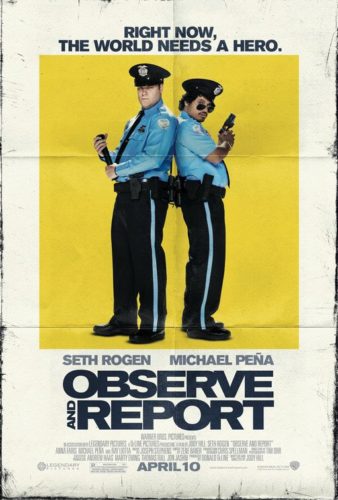
Not Quite Horror contains reviews of films not traditionally considered horror films. By analyzing them as horror films (identifying the monster, discussing the shared worry for the audience and the main characters, and understanding the depth of horror available to the viewer), who knows? There’s more than one way to watch a movie.
Observe and Report (2009)
The Monster: Ronnie (Seth Rogen) threatens everyone he comes into contact with simply by trying to be the best man he can be. Ronnie handles security for a mall plagued by both a series of thefts and a man who exposes himself to mall employees.
Ronnie does the best with what life has given him. He suffers from mental illness and has to support his dysfunctional mother instead of benefiting from her care. Co-workers and police officers prefer to insult Ronnie, until his rage grows. Even his greatest visions of heroism are filled with death and despair.
The Horror: Without proper support, Ronnie’s only options for dealing with adversity are violence and even more violence. He flattens a group of teenagers who deface his mall, then finds himself in a battle against an entire group of police officers with no way out but getting severely beaten.
The Shared Fate: Everyone gets angry, but with the right environment people identify better solutions for their problems. Ronnie is a monster because his environment failed him, and his life could have been exponentially better. Observe and Report is a comedy only because it is easier to laugh at Ronnie’s pain than it is to cry because the world is filled with Ronnies.
— I am indebted to Noel Carroll’s The Philosophy of Horror for his ideas on defining horror, as well as John Skipp and Craig Spector’s article “Death’s Rich Pageantry, or Skipp & Spector’s Handy-Dandy Splatterpunk Guide to the Horrors of Non-horror Film†in Cut! Horror Writers on Horror Film for a similar idea.–
–Axel Kohagen
